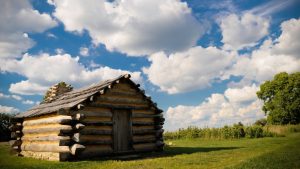1000 4th Ave
Seattle, WA 98104
USA
 Holde Frühlingszeit (Springtime) by Christoph Willibald Gluck (1714-1787), text: L. Hensel
Holde Frühlingszeit (Springtime) by Christoph Willibald Gluck (1714-1787), text: L. Hensel
Wiegenlied (Lullaby) by Johann Abraham Peter Schulz (1747-1800), text: Friederike Brun (1765-1835)
Sehnsucht nach dem Frühling (Yearning for Spring) by W. A. Mozart (1756-1791), text: Christian A. Overbeck (1755- 1821)
Frühlingslied (Spring Song) by Franz Schubert (1797-1828), text: Ludwig Christoph Heinrich Hölty (1748-1776)
Erstes Grün (First Grasses) by Robert Schumann (1810-1856), text: Justinus Kerner (1786-1862)
Frühlingsnacht (Spring Song) by Robert Schumann (1810-1856), text: Joseph v. Eichendorff (1788-1857)
Jasminenstrauch (Jasmine bush) by Robert Schumann (1810-1856), text: Friedrich Rückert (1788-1866)
Das Veilchen (The violet) by Clara Schumann (1819-1896), text: Johann Wolfgang von Goethe (1749-1832)
Draußen in Sievering (Out there in Sievering) from Die Tänzerin Danny Elßler (The Dancer Fanny Essler)– Johann Strauß (1825-1899)/Oskar Stalla, text: Hans Adler (1880-1957)
An einem Tag im Frühling (A day in Spring) – Franz Doelle (1883-1965) , text: Bruno Balz (1902-1988)
Veronika, der Lenz ist da (Veronika, spring is here)– Walter Jurmann (1903-1971), text: Fritz Rotter (1900-1984)
Ich hab im Frühling nur dich geküsst (I’ve kissed only you in the spring) by Walter Jurmann (1903-1971), text: Fritz Rotter (1900-1984)
Christine Menschner, soprano and Joan Lundquist, piano
Appalachian Spring arranged for solo piano by Aaron Copland (1900-1990)
- Very slowly. Introduction of the characters, one by one, in a suffused light.
- Fast/Allegro. Sudden burst of unison strings in A major arpeggios starts the action. A sentiment both elated and religious gives the keynote to this scene.
- Moderate/Moderato. Duo for the Bride and her Intended – scene of tenderness and passion.
- Quite fast. The Revivalist and his flock. Folksy feeling – suggestions of square dances and country fiddlers.
- Still faster/Subito Allegro. Solo dance of the Bride – presentiment of motherhood. Extremes of joy and fear and wonder.
- Very slowly (as at first). Transition scene to music reminiscent of the introduction.
- Calm and flowing/Doppio Movimento. Scenes of daily activity for the Bride and her Farmer husband. There are five variations on a Shaker theme. The theme, sung by a solo clarinet, was taken from a collection of Shaker melodies compiled by Edward D. Andrews, and published under the title “The Gift to Be Simple.” The melody borrowed and used almost literally is called “Simple Gifts.”
- Moderate. Coda/Moderato – Coda. The Bride takes her place among her neighbors. At the end the couple are left “quiet and strong in their new house.” Muted strings intone a hushed prayerlike chorale passage. The close is reminiscent of the opening music.
Karin McCullough, piano

